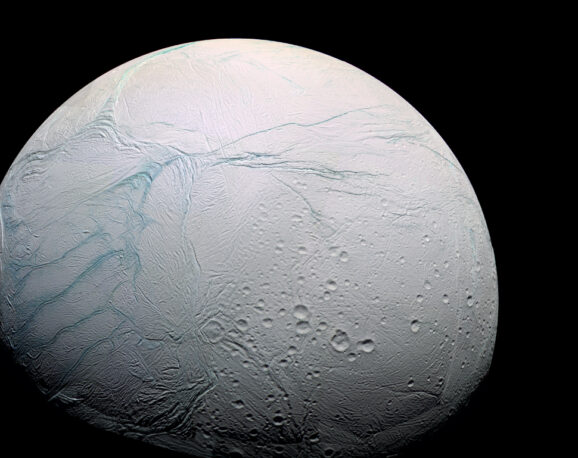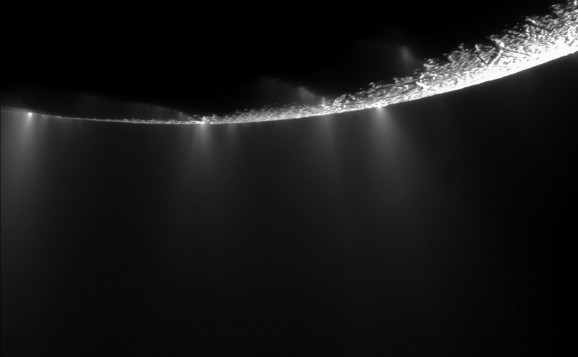Life Could Exist On Saturn’s Tiny Moon Enceladus
This article is more than 2 years old
 The Solar System’s most beautiful planet offers no end of discoveries, especially with Cassini on the job. But as dynamic as Saturn and its rings are, the planet’s moons are turning out to be the real revelation. Titan has oceans and probably moving waves, as well as salt flats, and is generally regarded as one of the best possibilities for harboring life in our neck of the woods. But focus has shifted to another of Saturn’s moons, Enceladus, which astronomers now think may be habitable due to the discovery of a hidden reservoir of liquid water under the surface.
The Solar System’s most beautiful planet offers no end of discoveries, especially with Cassini on the job. But as dynamic as Saturn and its rings are, the planet’s moons are turning out to be the real revelation. Titan has oceans and probably moving waves, as well as salt flats, and is generally regarded as one of the best possibilities for harboring life in our neck of the woods. But focus has shifted to another of Saturn’s moons, Enceladus, which astronomers now think may be habitable due to the discovery of a hidden reservoir of liquid water under the surface.
Thanks to Cassini, scientists have known that Enceladus contains an ocean beneath its surface. Like with Jupiter’s moon Europa, the spacecraft captured images of water vapor coming from cracks in the southern pole. But the existence of plumes doesn’t necessarily mean the existence of liquid water. Scientists didn’t know if the vapor is a result of tectonic movement and friction. But now they know that there is indeed liquid water under the surface of the small, icy satellite.
 Cassini’s gravity measurements from 2010-2012 revealed a significant negative gravity anomaly in the southern region of Enceladus, which means there’s less mass there than scientists anticipated. Something larger than the known depression at the southern pole of the moon would have to exist in order to explain the measurements. That explanation comes in the form of a hidden reservoir of liquid water., which provides more mass, and compensates for the negative gravity. The liquid layer is over 5 miles deep, and resides under an icy sheath 18-25 miles beneath the surface.
Cassini’s gravity measurements from 2010-2012 revealed a significant negative gravity anomaly in the southern region of Enceladus, which means there’s less mass there than scientists anticipated. Something larger than the known depression at the southern pole of the moon would have to exist in order to explain the measurements. That explanation comes in the form of a hidden reservoir of liquid water., which provides more mass, and compensates for the negative gravity. The liquid layer is over 5 miles deep, and resides under an icy sheath 18-25 miles beneath the surface.












